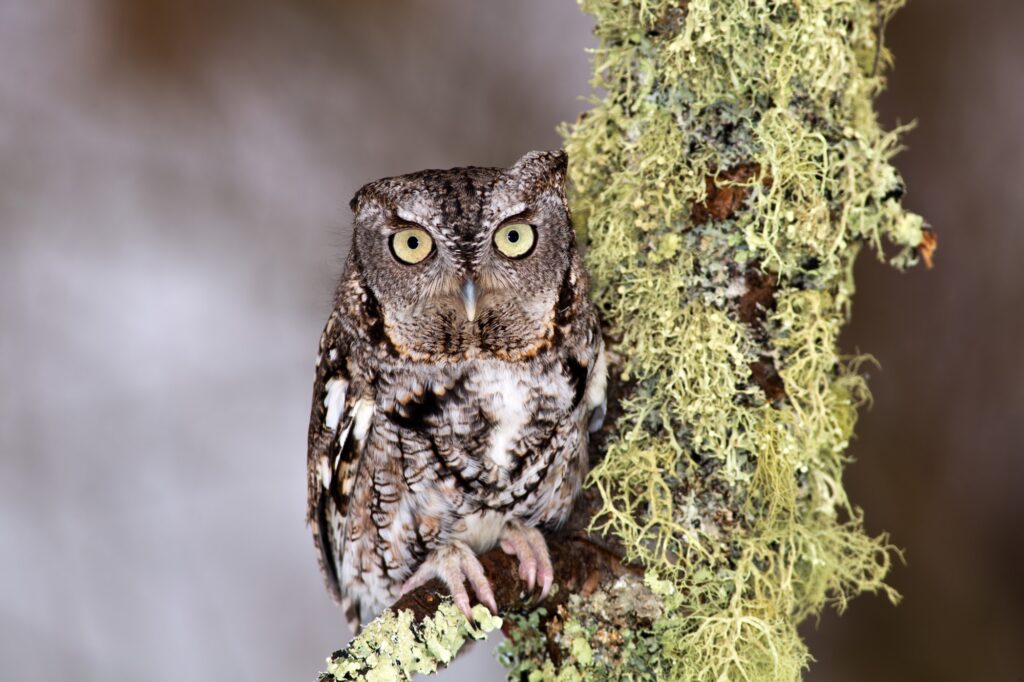Although not among the largest 10 states in the U.S., Alabama sure packs a punch in terms of wildlife. With its 52,400 square miles, it’s only the 30th largest state, but the 22 million acres of forest in the state contribute to the wide selection of mammals and birds, including raptors.
The types of raptors found in the state include owls, hawks, and eagles, and though forests and wildlife cover around 67 percent of the state’s total land area, there are some raptors you may come across in the city streets.
Today, we’ll show you the seven species of owls in Alabama. Not all of them remain in the state throughout the year, but you may be lucky enough to find yourself in the Heart of Dixie at the right time!
American Barn Owl
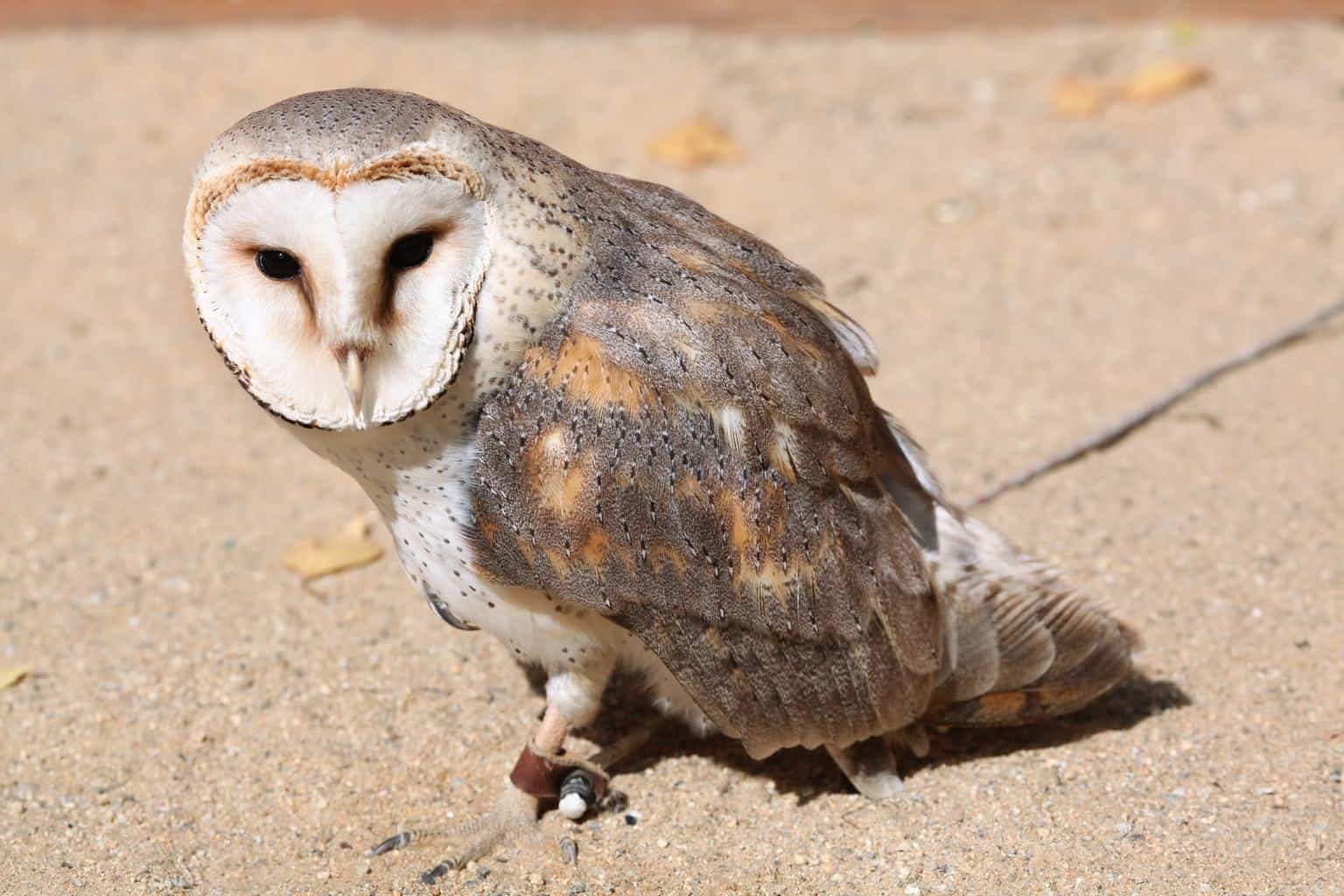
- Scientific Name: Tyto furcata
- Length: 13-15 inches
- Weight: 1-1.3 pounds
- Wingspan: 42-43.3 inches
American barn owls are known by plenty of names — you can call them ghost owls, church owls, or our personal favorite, monkey-faced owls! Some cultures associate them with bad omens, hence the eerie names.
You probably already guessed by its name, but this owl likes to live in barns, particularly abandoned ones. Farmers love having them around because they eat and scare off the rodents, keeping the space clear for the barn animals.
These champions are known for their heart-shaped faces and sandy bodies, but the birds’ face shape isn’t only for identification; it’s for steering surrounding sounds to the owl’s ear, too.
As a result, American barn owls have impressive hunting abilities. They can locate even the tiniest animals by their sounds, and they’re some of the few raptors that can hunt bats.
There are more than 40 varieties of these owls, but in Alabama, you’ll likely come across the American variation, which is the largest of them. They’re known for being strictly nocturnal, though, so you won’t see them until the night comes around.
Barred Owl
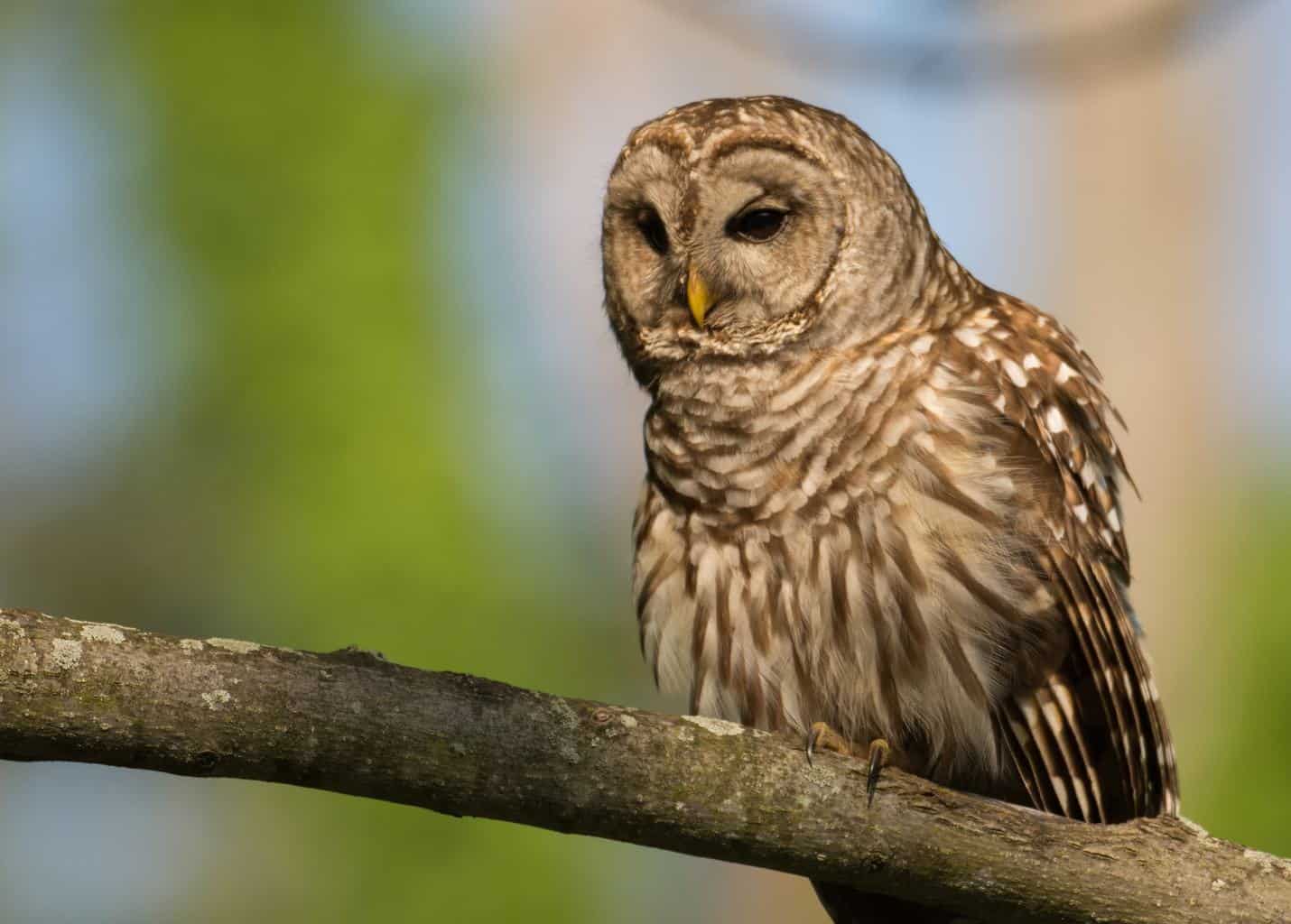
- Scientific Name: Strix varia
- Length: 16-25 inches
- Weight: 1-2.75 pounds
- Wingspan: 38-49 inches
Barred owls, otherwise known as hoot owls, are spread throughout the eastern United States. They’re also found in abundance around western Canada. You have a high chance of catching sight of them in Alabama, as they inhabit the state in large numbers and are among the unthreatened species.
They spend the whole year in the state, rarely migrating and only moving around within a diameter of six miles or so.
Barred owls get their name from the horizontal stripes on their backs, wings, and tails. The stripes often alternate between dark and light brown feathers, and they serve as an excellent identifying factor.
These owls are known for their observational skills. They’ll see you passing around them, and they’ll keep watching until you go away. If you happen to get too close, they’ll fly to another close area and continue watching. This process is also how these birds catch most of their prey.
Despite being notorious hunters, barred owls are sometimes hunted themselves by the great horned species. No other species would dare to come after these birds!
Unlike almost all the other species on this list, you’re more likely to see barred owls during the day.
Great Horned Owl

- Scientific Name: Bubo virginianus
- Length: 17-25 inches
- Weight: 2.5-4 pounds
- Wingspan: 36-60 inches
Great horned owls are one of the most common species of this bird found in North America. In Alabama, you can find them pretty much anywhere nesting sites are available. They can live in prairies, swamps, rainforests, urban areas, and tundras, so you won’t have a hard time finding them.
These birds have grey or orange bodies, and they’re easily identified by the large tufts on their heads. They have jagged striped lines across their bodies, making them look a bit like tigers. These lines help them as predators by keeping them relatively invisible.
On the underside of their bodies, the lines are horizontal, so they look like tree branches if someone is looking from below. On the other hand, if you look at these owls from above, you’ll find their feathers looking leafy as they’re disguised as tree colors.
The large great horned owl looks a bit scary, and it’s among the few species that feed on other predatory birds. These champions tend to feed on large animals like geese, rabbits, rats, raptors, and groundhogs to keep their big bodies satisfied. They won’t pass up small prey either, though, and will commonly chow down on mice, reptiles, insects, and frogs.
Eastern Screech Owl

- Scientific Name: Megascops asio
- Length: 6.3-9.8 inches
- Weight: 4.2-8.6 ounces
- Wingspan: 18-24 inches
Eastern screech owls are among the smallest species on the list. Most of them have grey bodies, but about a third of the population is colored red. They all have short, stocky bodies with no visible necks.
A lot of people mistake the tuft on top of these owls’ heads for ears, but those are actually on the side of their heads, parallel to their eyes. As for the tufts, they’re used by the owls for communication with other owls.
Eastern screeches can be found in any wooded area in Alabama, and they’re spread throughout both the Gulf of Mexico and past the Canadian border. They’re abundant in the southern state, so you have a high chance of spotting at least one of them, but bear in mind they’re mostly active at night.
Eastern screech owls don’t get nervous or aggressive around people, so you’ll find them comfortably nesting near busy highways or in populated buildings without minding the crowd.
Because of their relatively small size, screech owls stay away from areas where larger species frequent. So, you’re unlikely to find this bird and a great horned owl, for example, in one area.
Short-Eared Owl
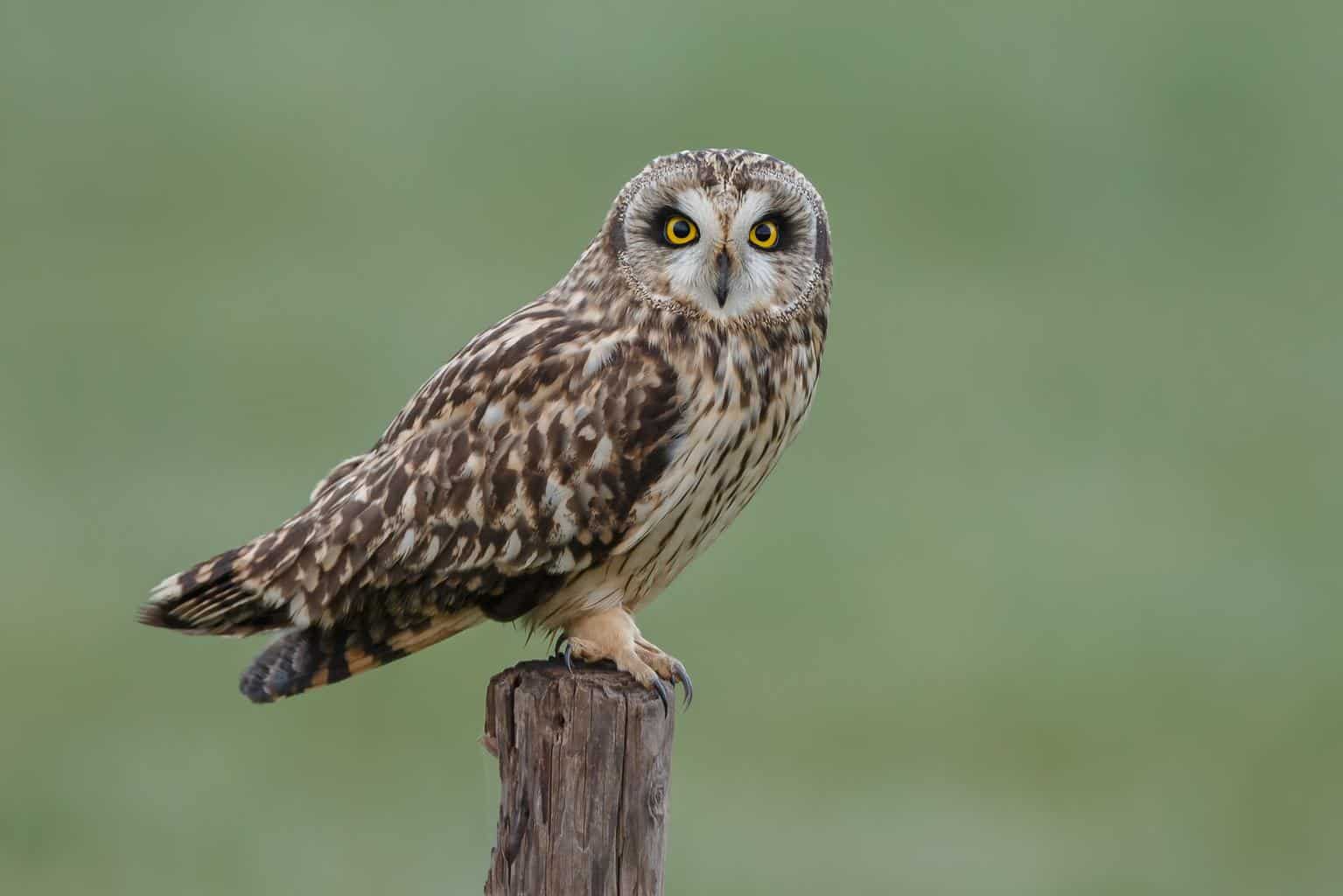
- Scientific Name: Asio flammeus
- Length: 13-17 inches
- Weight: 7.3-16.8 ounces
- Wingspan: 33.5-40.5 inches
Short-eared owls are known for being elusive. But just because they’re among the list of species that are hard to spot doesn’t mean they’re scarce. In fact, they’re one of the most common owl species in the world, so it’s no surprise they’re present in almost every U.S. state.
These owls spend the winter across North America, and they migrate toward the north when the breeding season comes around. However, some of them stay in the western part of the United States year-round.
You may find the short-eared owls in grasslands, meadows, open fields, and even around airports. Your best chance at catching a glimpse of one is during the day at dawn.
Unlike most owls, birds of the short-eared species nest on the ground. This typically puts them in more danger, especially in the prairies, but they keep a couple of safety tricks up their sleeves. For example, when a predator is near their nests, short-eared owls hop away pretending they’re crippled. They’ll also poop on their eggs to create a less-than-fresh smell that will keep predators away.
Long-Eared Owl
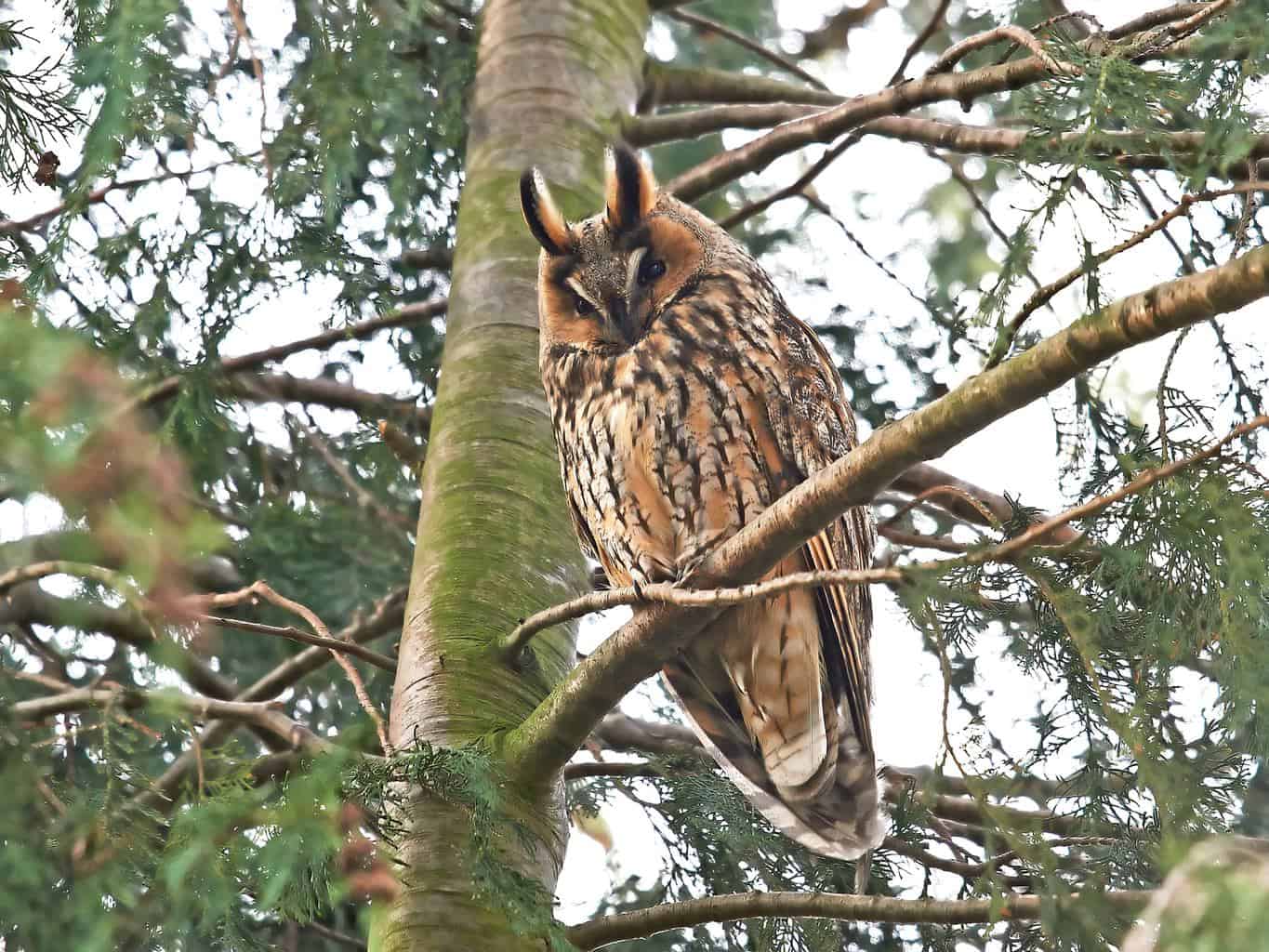
- Scientific Name: Asio otus
- Length: 13.8-15.8 inches
- Weight: 7.8-15.5 ounces
- Wingspan: 35.5-39.5 inches
Long-eared owls are scarcely found in Alabama, but if you’re around during the winter when their migration extends into the state, you might get lucky enough to see one of them.
These birds are easily identified by the tall tufts surrounding their heads. These tufts are also why some people call them cat owls. They also have wide, circular red eyes you’ll recognize miles away.
During the time the long-eared owl spends in Alabama, it doesn’t build a new nest. Instead, it claims one that’s been abandoned by another bird.
You’ll likely find them in dense woodlands, but the secretive birds have impressive camouflaging abilities that make them hard to spot. But even if you don’t get to see one, you might hear it, as their screeches can be heard from a long distance — almost a mile away!
Northern Saw-Whet Owl

- Scientific Name: Aegolious acadicus
- Length: 7-8.3 inches
- Weight: 2.3-5.5 ounces
- Wingspan: 16.5-19 inches
Like the long-eared owls mentioned above, this species is rarely found in Alabama. Northern saw-whet owls only spend the winter there, and they’re among the scarce species in the state because it’s a non-breeding area for them.
Northern saw-whets are smaller than average owls, which helps them stay agile and fast while hunting. Their speedy flight makes them hard to come across, but pay close attention to the skies, and you may get lucky.
You may hear the distinctive screech of this bird at night since that’s when they’re most active. People say their call sounds like a sawblade cutting a whetstone, which explains the species’ name.
Northern whets have unique eating habits. For example, they don’t devour their prey in one piece. Instead, they use their sharp talons to cut it into smaller pieces and eat it in two meals.
Closing Thoughts
Owls are interesting creatures. Their eating habits are different from other raptors, and, totally defying their predatory nature, they’re kind of cute!
Luckily for you, Alabama is full of different species of owls, so you won’t have a hard time finding one of two of these birds of prey there. If you’re interested in seeing more birds in Alabama, take a look at this list of the state’s woodpeckers.

